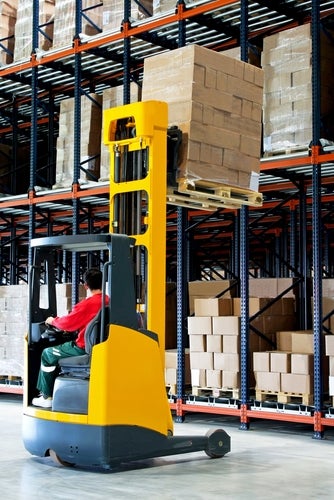
While much research goes into the development and manufacturing of a product, the party responsible for distributing that product must ensure that the scope of the initial product development is not compromised. For this reason many companies are looking for equipment such as stretch wrapping machines that will add efficiency and consistency to their packaging process.

Shipping methods will vary based on the size and weight of the product, the class that the product must be shipped via and order size. For example, a single industrial machine may come in a variety of boxes in individual pieces or even all bundled together on a single pallet. The goal is to get as much of that hardware to the customer as quickly and efficiently as possible.
Fortunately for warehousing operations, some of the current technological advances in stretch wrapping machines are taking the guesswork out of these packaging headaches and providing very definitive reasons companies are switching to stretch wrapping machines.
Stretch wrapping machines increase automation and product safety
One reason companies switch to stretch wrapping machines is product distribution. Often distribution means that the product must be secured to the pallet with the stretch film surrounding it. This security can not only be partially attributed to the gauge of stretch film that is used, but also how it is applied. Some semi-automatic stretch wrapping machines are designed to secure units to their palette by using reliable techniques such as a motorized pre-stretch system, according to Packaging Digest, that ensures tension is set to its ideal amount as pointed out below.
- Eliminates wasted film
- Renders a high degree of consistency
- Reduces costs on the film
- Decreases labor costs
Stretch wrapping machines dramatically increased speed
Bottom line, increased wrapping equals increased units ready for shipment each day. For example, a robotic pallet wrapper featured in Packaging World is a turn key packaging solution for customers wishing to increase the amount of palettes they produce in a single hour. The robotic pallet wrapper can produce an impressive 37 loads per hour while ensuring consistent quality each time a pallet is wrapped as the process is mechanically controlled by the stretch wrapping machine itself.
Increase employee safety with stretch wrapping machines
Manual hand wrapping, as opposed to machine wrapping, involves one hundred percent direct labor including bending, stooping and moving the pallet - all of which can contribute to injuries and strains. In semi-automatic stretch wrapping, a worker attaches the stretch wrap to the pallet load, starts the machine and then cuts the film tail when it's finished. That employee is then freed up to assist in other facets within the company leading to true labor cost savings.
While it may seem as though the wrapping of a pallet is a minor part of the transportation process, when such a step is not properly managed, the flaws of a company become more apparent. Damage to a single product or delayed delivery time can undo any of the hard work that went into the development and production of the product resulting in a loss of customers.





